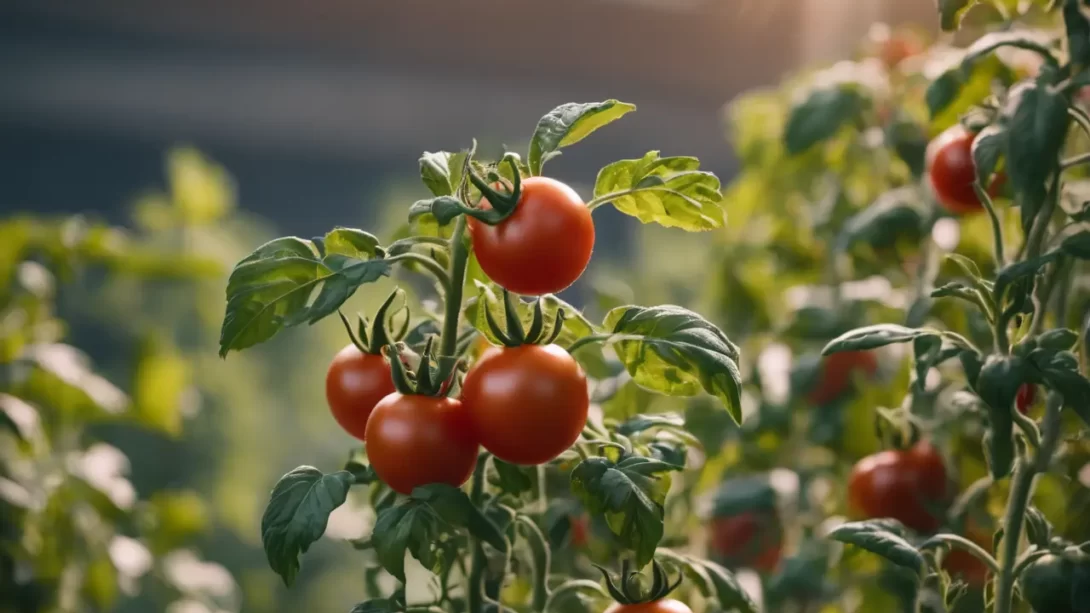Tomatoes are one of the most popular and versatile crops in both home gardens and commercial agriculture. However, for them to thrive and produce bountiful yields, the right growing conditions are essential. Among these, soil pH plays a pivotal role. Understanding and maintaining the ideal pH level for tomatoes is crucial for healthy growth and optimal fruit production.
Soil pH
Soil pH, a measure of the acidity or alkalinity of soil, significantly influences plant health and growth. It affects the availability of nutrients in the soil and the ability of plants to absorb them. A pH scale ranges from 0 to 14, with 7 being neutral. Values below 7 indicate acidity, while values above 7 signify alkalinity. For tomato plants, the pH of the soil can determine the efficiency of nutrient uptake and overall plant vigor.
Ideal pH Range for Tomatoes
Tomatoes prefer a slightly acidic to neutral soil pH, typically between 6.0 and 6.8. This range is ideal for most vegetable crops as it optimizes nutrient availability and absorption. In this pH environment, tomatoes can access the essential nutrients they need for growth, including nitrogen, phosphorus, and potassium, as well as important micronutrients like iron and manganese.
- Optimal Nutrient Uptake: At a pH of 6.0 to 6.8, the soil conditions allow for optimal uptake of both macronutrients and micronutrients, which are crucial for the growth and development of tomato plants.
- Root Health: This pH range also promotes healthy root development, which is essential for water and nutrient absorption.
Consequences of Incorrect pH for Tomatoes
Maintaining the correct soil pH is crucial, as deviations can lead to several problems:
- Acidic Soil (pH below 6.0): In overly acidic soil, tomatoes may struggle to absorb essential nutrients like calcium, leading to disorders such as blossom end rot. Additionally, high acidity can increase the availability of toxic metals like aluminum, harming the plant’s roots.
- Alkaline Soil (pH above 6.8): In alkaline conditions, tomatoes may face difficulty in absorbing micronutrients, particularly iron, leading to chlorosis (yellowing of leaves) and stunted growth.
Understanding these consequences underlines the importance of regularly monitoring and adjusting soil pH to ensure it remains within the optimal range for tomato growth.
Testing Soil pH
To manage soil pH effectively, regular testing is key:
- Home Testing Kits: These are readily available and provide a quick, easy way to check the pH of your soil.
- Professional Soil Testing: For a more comprehensive analysis, you can send a soil sample to a laboratory, which can provide detailed insights into pH and other soil properties.
Regular testing allows for timely interventions to correct pH imbalances, ensuring a conducive growing environment for tomatoes.
Adjusting Soil pH for Tomatoes
Depending on the results of your soil test, you may need to adjust the pH:
- Raising Soil pH (in acidic soils): Applying garden lime can help neutralize acidic soil, bringing the pH closer to the ideal range for tomatoes.
- Lowering Soil pH (in alkaline soils): To increase acidity, amendments like sulfur or aluminum sulfate can be effective. Organic matter, such as peat moss, can also help to gently lower soil pH over time.
It’s important to apply any amendments according to the manufacturer’s instructions and retest the soil after application to ensure the desired pH is achieved.
Maintaining Ideal pH Levels
Once the ideal pH range for tomatoes is achieved, consistent monitoring and maintenance are key to sustaining this environment:
- Regular Soil Testing: Continue to test the soil pH periodically, especially before planting and during the growing season, to ensure it remains in the optimal range.
- Consistent Watering: Over-watering or under-watering can affect soil pH. Ensure a regular watering schedule that keeps the soil moist but not waterlogged.
- Balanced Fertilization: Use fertilizers that match the nutritional needs of your tomatoes without drastically altering the soil pH. Organic fertilizers tend to be more pH-neutral compared to synthetic ones.
- Mulching and Organic Matter: Adding organic matter like compost or mulch can help in maintaining a balanced pH while improving soil structure and fertility.
Other Considerations for Growing Healthy Tomatoes
While soil pH is crucial, other factors also contribute significantly to the health and productivity of tomato plants:
- Sunlight: Tomatoes require full sun, at least 6 to 8 hours of direct sunlight per day.
- Soil Type: Well-draining soil is essential to prevent waterlogging and root diseases.
- Pest and Disease Control: Regularly inspect plants for signs of pests or diseases and take prompt action when necessary.
- Proper Spacing: Ensure adequate spacing between plants to promote air circulation and reduce the risk of disease spread.
Conclusion
The right soil pH is fundamental for growing healthy, productive tomato plants. By understanding and maintaining a pH range of 6.0 to 6.8, gardeners can optimize nutrient availability and create a conducive environment for tomato growth. Regular soil testing, appropriate amendments, and an integrated approach considering watering, sunlight, and pest management are all crucial aspects of successful tomato cultivation. With these considerations in mind, gardeners can enjoy the rewards of a bountiful tomato harvest.



